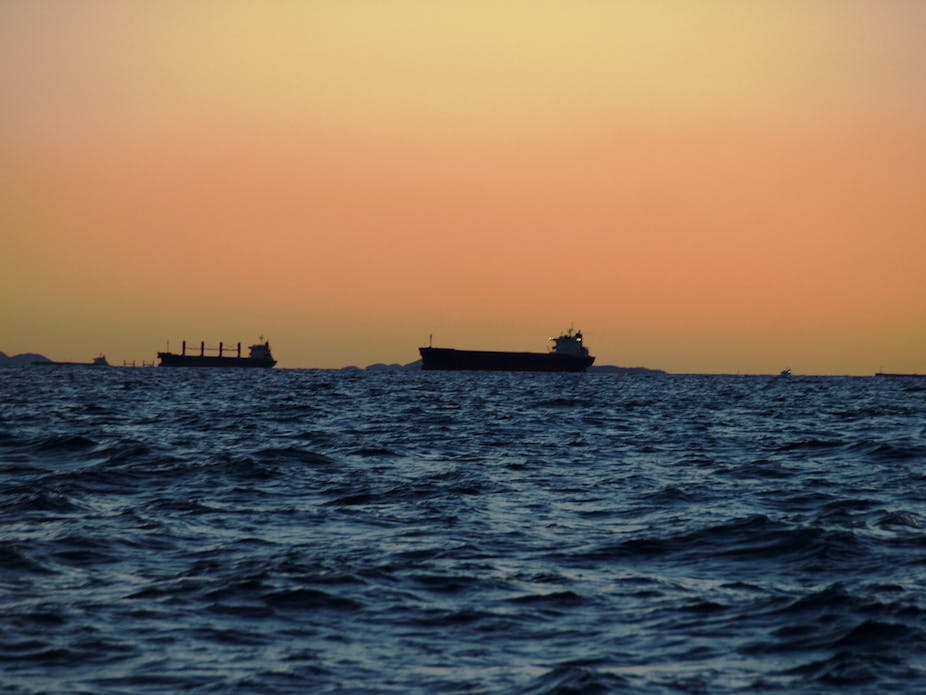We are in the coal business. If you want decent hospitals, schools and police on the beat we all need to understand that. – Queensland Premier Campbell Newman, June 2012.
It was a rare moment of unscripted truth in Australian politics, which summed up decades of national policy.
The Premier was responding to United Nations report on the health of the Great Barrier Reef, warning that it could be listed as a World Heritage site “in danger” unless Australia stepped up its protection of the reef, particularly from increased port development. (The World Heritage Committee is due to discuss it again at a meeting in June this year.)
Newman was not just articulating Liberal National Party policy; keeping Australia in the coal business has also been core to Labor’s economic policy for many decades, going back to the “no regrets” approach of the Hawke/Keating years.

It’s not hard to see why the bipartisan consensus on coal persists. Coal is the biggest export earner for Queensland and New South Wales, and our second biggest nationally, worth A$41 billion in 2012.
So here’s the surprising part. Over the past year, Newman has been asking Queenslanders to come up with a 30-year vision for the state, “beyond politics, and beyond the next 10 elections. It will be a genuine reflection of our collective aspirations for the future.”
Nearly 80,000 people have had their say – and in the draft plan currently under review by the state government, coal doesn’t rate a mention.
By the people, for the people
The Queensland government’s Queensland Plan is significant because it’s among the most extensive public consultation processes ever undertaken by an Australian or state government. A leading American planning consultant and adviser to the Premier, Steven Ames, describes the effort being made to hear views from across the state as a “virtuous circle”:
Bottom line, the more engaged the public, and the more aware the government of public perceptions, the more effective and long-lasting outcomes that can be expected. – Ames, correspondence with the author.

Launched early last year, there have been major summits in Mackay and Brisbane, dozens of workshops and hundreds of meetings across the state, as well as online surveys and discussions, all feeding into a draft 30-year plan. The final plan will be released in mid-2014.
Subtitled “Our working draft created by Queenslanders, for Queensland”, the 44-page draft plan distills all that community consultation into nine key subjects: education, community, regions, economy, health and well-being, environment, people, infrastructure, and governance.
More thorough than any public opinion poll, the draft Queensland Plan shows that Queenslanders want regional development and livable communities, but importantly they want these to be innovative, sustainable, and supportive of emerging industries.
Surprisingly, “coal” is nowhere to be found in the draft Queensland Plan. Instead, people have expressed a clear preference for developing agriculture, ecotourism, education, research and development, and alternative energy.
Among the top 35 goals outlined are that “We protect the environment” and “We invest in and adopt sustainable and renewable solutions”. Asked “What does success look like?” in achieving that latter goal, Queenslanders have said “Renewable energy will be the norm.”
Envisaging a different future
For so many people from such a coal-reliant state to envisage a generational shift away from coal is remarkable.

But it mirrors some other shifts in public sentiment and behaviour, in which ordinary Australians have moved ahead of politicians – sometimes catching federal and state governments off-guard.
Even a few years ago, who would have confidently predicted the recent trends in rooftop solar power? Certainly not major power companies like AGL, which have reported hits to their profits as more Australians try to control their rising power bills by going solar. Between March 2011 and the end of 2013, the proportion of Australian homes with solar panels more than doubled from 7.5% in March 2011 to 16%, representing more than 3 million people.
However, imagining a future without significant coal export revenues will be harder for political leaders from both major parties.
For instance, even while the Gillard government was introducing a carbon tax, it went to great lengths to reassure its heartland about the future for coal, with Climate Change Minister Greg Combet declaring in 2011: “I can assure coal miners that their industry has a bright future under a carbon price.”
Will politicians listen?
Campbell Newman has shown himself to be a commendably unorthodox political leader in conceiving and championing such an inclusive, forward-thinking process as the Queensland Plan.
So now the question is whether both sides of politics will heed the sentiment so strongly articulated in this bold 30-year community vision for Australia’s leading coal state.
Ultimately, it is a vision that neither the Liberal National Party nor Labor can ignore.
The alternative, as the people have rightly identified, leaves us dependent on the hope that Asia’s major coal consumers will never clean up their own industries. It’s a risky strategy, as more analysts are warning, particularly as our region’s economic powerhouse and main Australian market, China, has announced its own “war on pollution” – much of it generated by burning coal.

